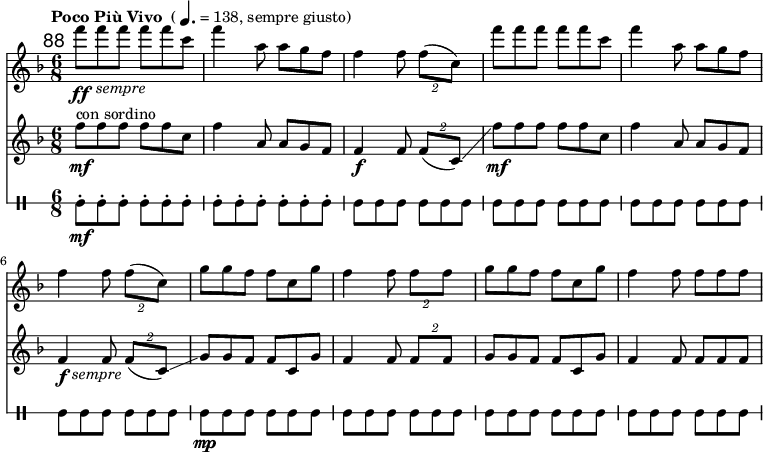|
印第安交響曲《印第安交響曲》(Sinfonía india)是墨西哥作曲家卡洛斯·查維斯的交響作品,屬於他第二首交響曲,於1935-36年間創作,被譽為是查維斯的代表作。本作品採用單樂章結構寫成,但仍可分為三個小「樂章」,各小樂章均配以一首傳統墨西哥北部的印第安人旋律所發展出來。 創作背景作品於1935年12月起開始創作,這時查維斯正藉在美國作首次的公演,翌年年初即於紐約完成,隨即便於1月23日在一個電台演奏會中由哥倫比亞廣播公司交響樂團作首次演出,同時4月10日由波士頓交響樂團作音樂會首演。至於墨西哥國內首演則於同年7月31日舉行[1]。由於音樂具有原住民色彩,亦反映了作曲家對自己民族的身份認同,很快便在美洲地區普及起來,及後更為其他地方所認識。 配器本曲採用浪漫主義音樂時期的規模,其中敲擊樂器採用了大量印第安「亞基部落」(Yanqi)所使用的樂器。當席爾默公司出版樂譜時,把這些亞基樂器改以接近西洋樂團中類近的敲擊樂器代替,並在樂器頁中描述相關的樂器對應。
1971年席爾默公司出版了由弗蘭克·威廉·埃里克森改編的管樂團版本樂譜,這個改編雖然未有得到查維斯的正式認可,然而他也曾指揮過這版本,亦作出了一些修正[2]。 全曲演奏時間約為 12-13 分鐘。 樂曲分析
外部連結注釋
|
Index:
pl ar de en es fr it arz nl ja pt ceb sv uk vi war zh ru af ast az bg zh-min-nan bn be ca cs cy da et el eo eu fa gl ko hi hr id he ka la lv lt hu mk ms min no nn ce uz kk ro simple sk sl sr sh fi ta tt th tg azb tr ur zh-yue hy my ace als am an hyw ban bjn map-bms ba be-tarask bcl bpy bar bs br cv nv eml hif fo fy ga gd gu hak ha hsb io ig ilo ia ie os is jv kn ht ku ckb ky mrj lb lij li lmo mai mg ml zh-classical mr xmf mzn cdo mn nap new ne frr oc mhr or as pa pnb ps pms nds crh qu sa sah sco sq scn si sd szl su sw tl shn te bug vec vo wa wuu yi yo diq bat-smg zu lad kbd ang smn ab roa-rup frp arc gn av ay bh bi bo bxr cbk-zam co za dag ary se pdc dv dsb myv ext fur gv gag inh ki glk gan guw xal haw rw kbp pam csb kw km kv koi kg gom ks gcr lo lbe ltg lez nia ln jbo lg mt mi tw mwl mdf mnw nqo fj nah na nds-nl nrm nov om pi pag pap pfl pcd krc kaa ksh rm rue sm sat sc trv stq nso sn cu so srn kab roa-tara tet tpi to chr tum tk tyv udm ug vep fiu-vro vls wo xh zea ty ak bm ch ny ee ff got iu ik kl mad cr pih ami pwn pnt dz rmy rn sg st tn ss ti din chy ts kcg ve
Portal di Ensiklopedia Dunia






